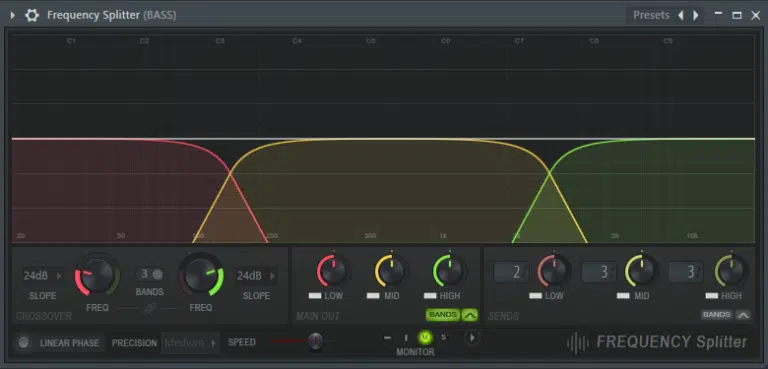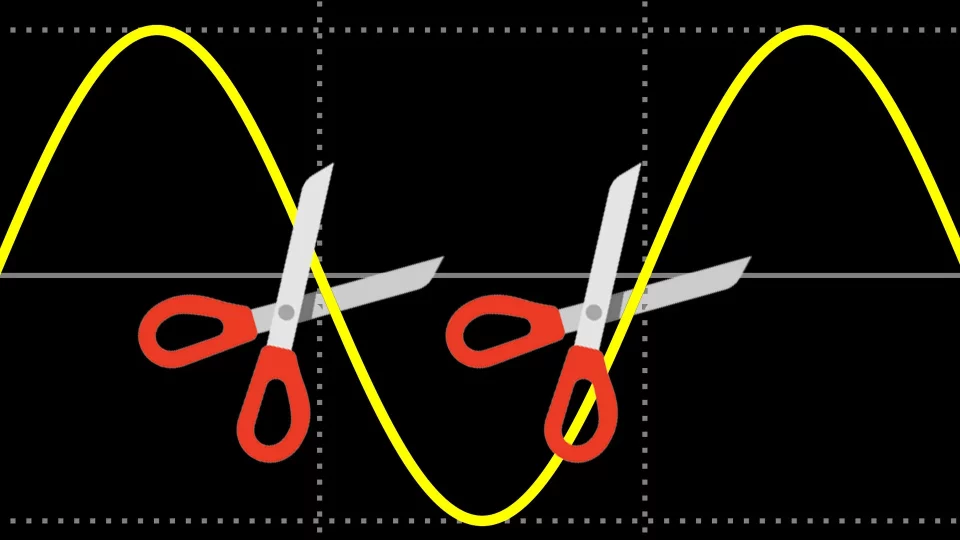Frequency Splitting Trap and Hip-Hop Drums
In Hip-Hop and Trap music, drums are often the driving force setting the energy of the track. Getting them to sit perfectly in the mix is essential for an impactful sound. An effective way to achieve this level of control is by splitting your drums into specific frequency ranges. This allows you to fine-tune each part of the drum kit for maximum clarity and punch. In this post we take a closer look at this technique and the advantages of this approach along with some practical applications:
Advantages of Frequency Splitting for Trap and Hip Hop Drums
Enhanced Clarity
- The main advantage of targeting separate frequency ranges is the ability to apply different processing values to each frequency area. This allows you to treat the kick i.e adding more punch or sub frequencies without affecting the crispness of the hi-hats in the high frequencies or the body of the snare in the midrange.
- This approach helps avoid frequency masking. This is when overlapping frequencies from different sounds compete often resulting in the muddying of the mix. With frequency-splitting, each part of the drum spectrum can stand out distinctly. By spliting the drums into 3 frequencies (Low end/mids/tops) you can attribute and focus on the kick (Low end) the snare or clap (Mid Range) and the hats (High frequencies)
Detailed Tonal Shaping
- Trap and Hip Hop drums generally rely on heavy sub-bass, crisp highs, and punchy mid frequencies. With frequency splitting, you can use processing such as saturation, distortion, and exciters to shape each band differently. This way you can achieve the desired tone for each drum element while avoiding the over-processing of any single component. For example, adding subtle distortion to your kicks can give them more presence and character.
Targeted Dynamics Control:
- Different elements in Trap and Hip Hop drums benefit from distinct dynamics control. Frequency splitting allows you to apply precise compression settings to specific drum areas. For example, it allows you to compress the low frequencies for a steady, punchy kick while allowing more transient detail in the mid and high frequencies.
- Frequency splitting is particularly useful for controlling the 808 kick sub basslines that are very much a feature of Trap beats. This technique allows you to tighten the subfrequencies without affecting the higher components. It also allows you to create a more balanced volume level with the sub-basslines. Ideally however your sub-basslines will be on another channel. In this instance, it’s advisable to apply a sidechain compressor to the sub-bassline and use the kick to trigger the compression rates. For more on sidechaining check out this post.

Practical Applications for Frequency Splitting in Trap and Hip Hop Drums
(Sub Frequencies, ~20 Hz – 250 Hz)
- Add subtle to moderate saturation or distortion for more presence and energy. This also helps the low end to be heard on small speakers due to the harmonics added.
- Kicks and the low end do not lend themselves well to stereo spread. Use frequency splitting to specifically turn the stereo field off in the low frequencies allowing the mids and highs some stereo spread.
(Punch Frequencies, ~250 Hz – 2 kHz)
- The mid-band is where snares and claps generally sit. Transient shapers or compressors can add a sharper attack as well as allow control over sustain. This makes them perfect for sculpting the dynamics of snares and claps. Use these tools creatively to make snares and claps punch through the mix. This can give your drums more energy and character.
- By isolating the mid band, you can add distortion or saturation to the snares and claps, which can give them a touch of grit and attitude without affecting the tops or bottom.
- Hip-hop and Trap beats can benefit from reducing muddy frequencies in this range. Use frequency sweeping to carve out a clean mid-range without affecting the presence of high hats or low-end bass.
(Air Frequencies, ~2 kHz and Above)
- Adding reverb just to the top end creates a sense of space around hi-hats and cymbals, without muddying the mid and most importantly low frequencies.
- Use a de-esser specifically to the high frequencies to tame sharp transients, softening potentially harsh sounds and reducing ear fatigue.
- If your hats and top end sounds a little dull try adding an exciter or harmonic enhancement. This can make the hats and cymbals sound crisp and lively. Just be careful not to over do this effect.
Other Useful Applications for Drum Frequency Splitting
- Automating effects like reverb or delay on specific frequency bands can create interesting transitions. For example, increasing high-end reverb during a breakdown or chorus adds a sense of lift.
- Apply parallel compression to only certain frequency bands (e.g., just the mids) to add extra punch without overpowering the entire drum mix or compromising the bottom end.
- Use a very wide stereo image only on the high frequencies for an airy feel. This is especially effective in creating an immersive listening experience where the bass should stay centred and solid.
- Use specific drum frequency bands to trigger sidechain compression for other instruments that are competing for the same frequency real estate.
Conclusion
Using frequency splitting for Trap and Hip Hop drums provides a high level of customization not afforded by a single drum channel. Used effectively splitting the frequencies of your drums can give them more energy and character as well as help them to sit nicely in the mix.
So, next time you’re mixing your Trap or Hip-Hop beats, try splitting your drums into three distinct frequency ranges—you’ll be amazed at how much control it brings to your mix.
Remember – RouteNote Create subscriptions start from as little as $2.99. You also get 10 FREE credits to spend on samples along with access to our FREE sample pack bundle when you sign-up!
